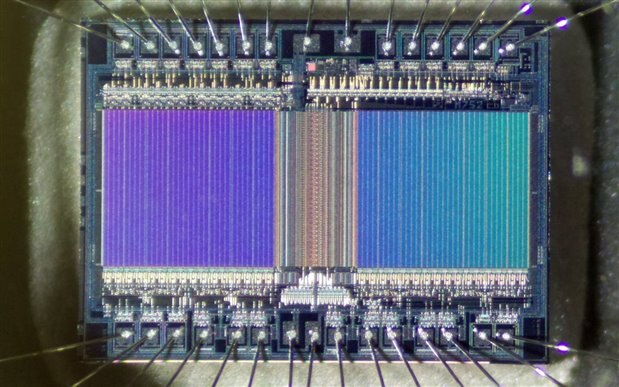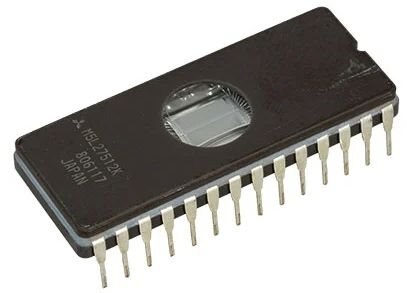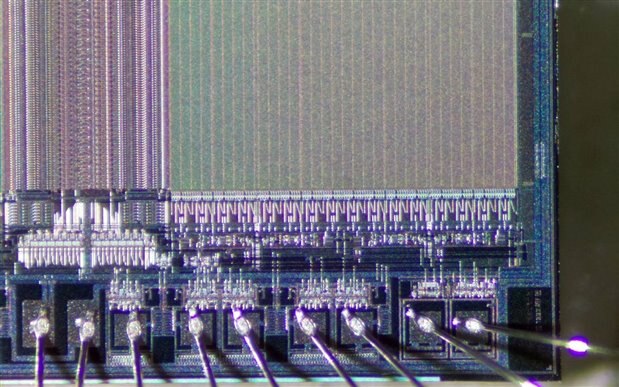This is just an off the wall way to say thank you to element14 and Xilinx. They had a little give-away draw to win a Zynq book and they ended up sending me a huge book called Exploring Zynq MPSoC and a screw driver set. I also recently completed a Project14 so I threw in some images from that project.
This is a digital microscope image of a 27512 EPROM. It took a lot of digging in my archives to find this chip, but I wanted a chip with a ready-made window so the microscope could image the actual silicon.
Click on the image for a full size view.
Here is what a typical EPROM looks like with its window to allow UV light to erase the memory:
I also took a a closer image just to see what this microscope can do....
I'm having a lot of fun with this microscope.
Here is a video of the FPGA Technology Quiz prizes and the Pi HQ Camera microscope in action....
I once used EPROM without a CPU as a look up table to convert 18 bit gray code to binary.
Have you ever tried to use sunlight to erase an EPROM?
Feel free to add your EPROM stories below, I'm sure there are lots of them.
Relevant Links:




-

ralphjy
-
Cancel
-
Vote Up
0
Vote Down
-
-
Sign in to reply
-
More
-
Cancel
-

DAB
in reply to ralphjy
-
Cancel
-
Vote Up
0
Vote Down
-
-
Sign in to reply
-
More
-
Cancel
-

dougw
in reply to DAB
-
Cancel
-
Vote Up
0
Vote Down
-
-
Sign in to reply
-
More
-
Cancel
-

jc2048
in reply to dougw
-
Cancel
-
Vote Up
0
Vote Down
-
-
Sign in to reply
-
More
-
Cancel
-

jc2048
in reply to dougw
-
Cancel
-
Vote Up
0
Vote Down
-
-
Sign in to reply
-
More
-
Cancel
Comment-

jc2048
in reply to dougw
-
Cancel
-
Vote Up
0
Vote Down
-
-
Sign in to reply
-
More
-
Cancel
Children